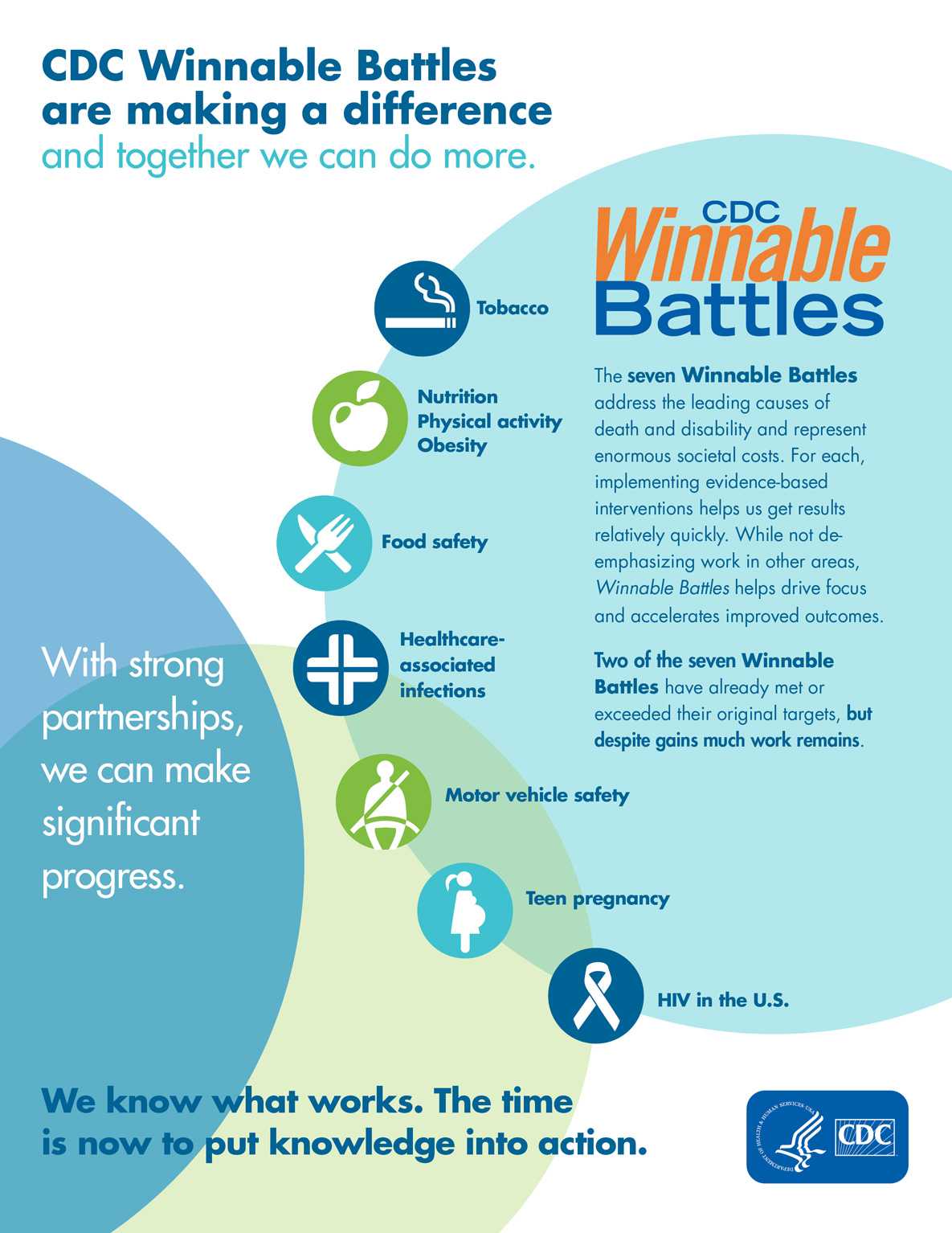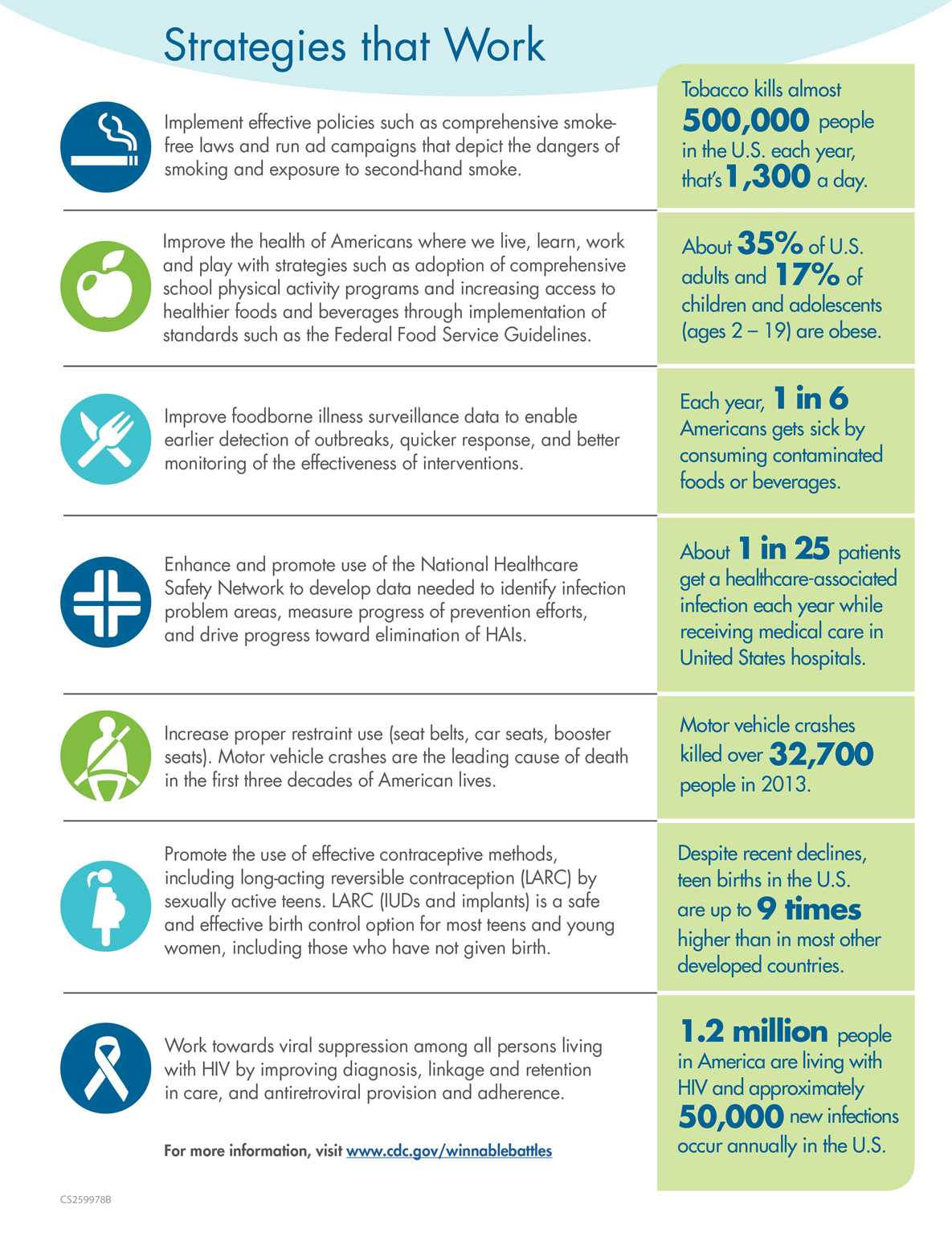Winnable Battles Infographic
Winnable Battles Infographic [PDF – 177K]
CDC Winnable Battles
CDC Winnable Battles are making a difference and together we can do more.
The seven Winnable Battles address the leading causes of death and disability and represent enormous societal costs. For each, implementing evidence-based interventions helps us get results relatively quickly. While not deemphasizing work in other areas, Winnable Battles helps drive focus and accelerates improved outcomes. Two of the seven Winnable Battles have already met or exceeded their original targets, but despite gains much work remains.
With strong partnerships, we can make significant progress.
- Tobacco
- Nutrition, Physical activity, Obesity
- Food safety
- Healthcareassociated
infections - Motor vehicle safety
- Teen pregnancy
- HIV in the U.S.
We know what works. The time is now to put knowledge into action.
Strategies that Work
Tobacco
Implement effective policies such as comprehensive smokefree laws and run ad campaigns that depict the dangers of smoking and exposure to second-hand smoke.
Tobacco kills almost 500,000 people in the U.S. each year, that’s1,300 a day.
Nutrition, Physical activity, Obesity
Improve the health of Americans where we live, learn, work and play with strategies such as adoption of comprehensive school physical activity programs and implementation of the Food Service Guidelines to increase access to healthier food and beverages.
About 35% of U.S. adults and 17% of children and adolescents (ages 2 – 19) are obese.
Food safety
Decrease illness due to foodborne pathogens such as Salmonella by partnering with grocery retailers and suppliers to encourage holistic controls from farm to final product designed to significantly reduce potential contamination levels.
Each year, 1 in 6 Americans gets sick by consuming contaminated foods or beverages.
Healthcare associated infections
Enhance and promote use of the National Healthcare Safety Network to develop data needed to identify infection problem areas, measure progress of prevention efforts, and drive progress toward elimination of HAIs.
About 1 in 25 patients get a healthcare-associated infection each year while receiving medical care in United States hospitals.
Motor vehicle safety
Improve proper restraint use (seat belts, car seats, booster seats). Motor vehicle crashes are the leading cause of death in the first three decades of American lives.
Motor vehicle crashes killed over 32,700 people in 2013.
Teen pregnancy
Promote the use of effective contraceptive methods, including long-acting reversible contraception (LARC) by sexually active teens. LARC (IUDs and implants) is a safe and effective birth control option for most teens and young women, including those who have not given birth.
Despite recent declines, teen births in the U.S. are up to 9 times higher than in most other developed countries.
HIV in the U.S.
Work towards viral suppression among all persons living with HIV by improving diagnosis, linkage and retention in care, and antiretroviral provision and adherence.
1.2 million people in America are living with HIV and approximately 50,000 new infections occur annually in the U.S.
For more information, visit www.cdc.gov/winnablebattles
- Page last reviewed: November 20, 2015
- Page last updated: November 20, 2015
- Content source:


 ShareCompartir
ShareCompartir

